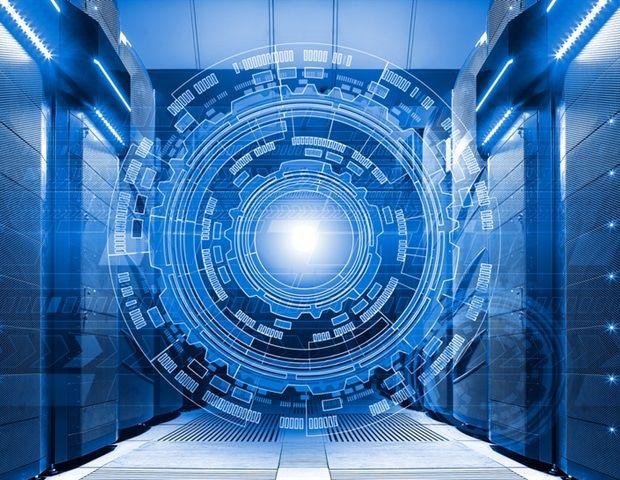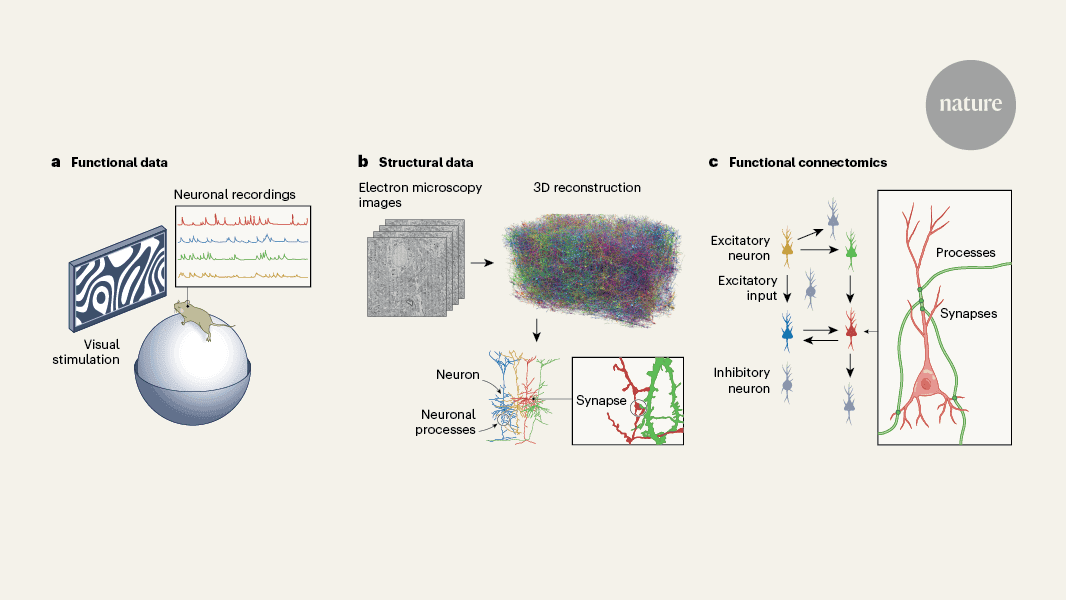Brain's Time Keeper: New Study Reveals How Hippocampus Processes Temporal Experiences
4 Sources
4 Sources
[1]
How does the brain process experiences over time? - Earth.com
Experts at UCLA Health have begun to uncover one of the fundamental mysteries in neuroscience - how the human brain encodes and interprets the flow of time and experiences. The experts directly recorded the activity of individual neurons in humans and revealed that specific brain cells fire in a way that reflects the order and structure of a person's experiences. Notably, the brain retains these firing patterns after the experience has ended and can rapidly replay them during periods of rest. The brain also utilizes these learned patterns to prepare for future stimuli, offering the first empirical evidence of how brain cells integrate "what" and "when" information to retain representations of experiences over time. Dr. Itzhak Fried, the study's senior author, noted that these findings could be pivotal in developing neuro-prosthetic devices designed to enhance memory and other cognitive functions. The study's results may also provide insights into artificial intelligence's understanding of cognition in the human brain. "Recognizing patterns from experiences over time is crucial for the human brain to form memory, predict potential future outcomes and guide behaviors," said Fried, director of epilepsy surgery at UCLA Health. "But how this process is carried out in the brain at the cellular level has remained unknown - until now." Previous research, including work by Fried, used brain recordings and neuroimaging to explore how the brain processes spatial navigation. The studies showed that two regions of the brain - the hippocampus and the entorhinal cortex - play key roles. These areas, both critical for memory, work together to create a "cognitive map." Hippocampal neurons function as "place cells," marking specific locations like an 'X' on a map, while entorhinal neurons act as "grid cells," measuring spatial distances. Initially discovered in rodents, these cells were later found to also exist in humans. Further studies have demonstrated that similar neural processes are involved in representing non-spatial experiences such as time, sound frequency, and object characteristics. One of Fried's seminal findings was the discovery of "concept cells" in the human hippocampus and entorhinal cortex, which respond to specific individuals, places, or distinct objects and are essential for memory. To study how the brain processes experiences over time, the UCLA team recruited 17 participants with intractable epilepsy, all of whom had depth electrodes implanted in their brains for clinical treatment. The researchers recorded the neural activity of these participants as they performed tasks involving pattern recognition and image sequencing. The experiment began with an initial screening phase where about 120 images of people, animals, objects, and landmarks were shown repeatedly over a 40-minute period. Participants were instructed to complete various tasks, such as determining whether an image showed a person. The images included famous actors, musicians, and places, based partly on the participants' preferences. The main experiment involved three phases, during which six images were displayed in random or structured order across a pyramid-shaped graph. Participants were tasked with behavioral responses unrelated to image positioning, such as identifying whether an image showed a male or female or if the image was mirrored from previous phases. In their analysis, Fried and his team found that hippocampal-entorhinal neurons began to modify their activity in alignment with the image sequence on the pyramid graph. Remarkably, these patterns formed without any direct instruction to the participants. The neuronal patterns also reflected the likelihood of upcoming stimuli and remained encoded even after the tasks were completed. "This study shows us for the first time how the brain uses analogous mechanisms to represent what are seemingly very different types of information: space and time," said Fried. "We have demonstrated at the neuronal level how these representations of object trajectories in time are incorporated by the human hippocampal-entorhinal system." These findings provide an unprecedented glimpse into how the brain processes the flow of time, potentially opening doors to new research in memory and cognition. Like what you read? Subscribe to our newsletter for engaging articles, exclusive content, and the latest updates.
[2]
How the Brain Encodes Time and Experiences - Neuroscience News
Summary: A new study reveals how specific brain cells in the hippocampus and entorhinal cortex encode time and experiences, helping us form memories and predict future outcomes. These neurons fire in patterns reflecting the order of events, even replaying them after the experience is over. This discovery provides insight into how the brain integrates "what" and "when" information to form lasting memories. A landmark study led by UCLA Health has begun to unravel one of the fundamental mysteries in neuroscience - how the human brain encodes and makes sense of the flow of time and experiences. The study, published in the journal Nature, directly recorded the activity of individual neurons in humans and found specific types of brain cells fired in a way that mostly mirrored the order and structure of a person's experience. They found the brain retains these unique firing patterns after the experience is concluded and can rapidly replay them while at rest. Furthermore, the brain is also able to utilize these learned patterns to ready itself for future stimuli following that experience. These findings provide the first empirical evidence regarding how specific brain cells integrate "what" and "when" information to extract and retain representations of experiences through time. The study's senior author, Dr. Itzhak Fried, said the results could serve in the development of neuro-prosthetic devices to enhance memory and other cognitive functions as well as have implications in artificial intelligence's understanding of cognition in the human brain. "Recognizing patterns from experiences over time is crucial for the human brain to form memory, predict potential future outcomes and guide behaviors," said Fried, director of epilepsy surgery at UCLA Health and professor of neurosurgery, psychiatry and biobehavioral sciences at the David Geffen School of Medicine at UCLA. "But how this process is carried out in the brain at the cellular level had remained unknown - until now." Previous research, including by Dr. Fried, used brain recordings and neuroimaging to understand how the brain processes spatial navigation, showing in animal and human models that two regions of the brain - the hippocampus and the entorhinal cortex - played key roles. The two brain regions, both important in memory functions, work to interact to create a "cognitive map." The hippocampal neurons act as "place cells" that show when an animal is at a specific location, similar to an 'X' on a map, while the entorhinal neurons act as "grid cells" to provide a metric of spatial distance. These cells found first in rodents were later found in humans by Fried's group. Further studies have found similar neural actions work to represent non-spatial experiences such as time, sound frequency and characteristics of objects. A seminal finding by Fried and his colleagues was that of "concept cells" in human hippocampus and entorhinal cortex that responds to particular individuals, places or distinct objects and appear to be fundamental to our ability for memory. To examine the brain processing of events in time, the UCLA study recruited 17 participants with intractable epilepsy who had been previously had depth electrodes implanted in their brains for clinical treatment. Researchers recorded the neural activity of the participants as they underwent a complex procedure that involved behavioral tasks, pattern recognition and image sequencing. Participants first underwent an initial screening section during which approximately 120 images of people, animals, objects and landmarks were repeatedly shown to them on a computer over about 40 minutes. The participants were instructed to perform various tasks such as determining whether the image showed a person or not. The images, of things like famous actors, musicians and places, were selected partly based on each participant's preferences. Following this, the participants underwent a three-phase experiment in which they would perform behavioral tasks in response to images that were arbitrarily displayed on different locations of a pyramid-shaped graph. Six images were selected for each participant. In the first phase, images were displayed in a pseudo-random order. The next phase had the order of images determined by the location on the pyramid graph. The final phase was identical to the first phase. While watching these images, the participants were asked to perform various behavioral tasks that were unrelated to the positioning of the images on the pyramid graph. These tasks included determining whether the image showed a male or female or whether a given image was mirrored compared to the previous phase. In their analyses, Fried and his colleagues found the hippocampal-entorhinal neurons gradually began to modify and closely align their activity to the sequencing of images on the pyramid graphs. These patterns were formed naturally and without direct instruction to the participants, according to Fried. Additionally, the neuronal patterns reflected the probability of upcoming stimuli and retained the encoded patterns even after the task was completed. Lead author of the study was Pawel Tacikowski with co-authors Guldamla Kalendar and Davide Ciliberti. "This study shows us for the first time how the brain uses analogous mechanisms to represent what are seemingly very different types of information: space and time," Fried said. "We have demonstrated at the neuronal level how these representations of object trajectories in time are incorporated by the human hippocampal-entorhinal system."
[3]
Encoding Human Experience: Study Reveals How Brain | Newswise
Newswise -- A landmark study led by UCLA Health has begun to unravel one of the fundamental mysteries in neuroscience - how the human brain encodes and makes sense of the flow of time and experiences. The study, published in the journal Nature, directly recorded the activity of individual neurons in humans and found specific types of brain cells fired in a way that mostly mirrored the order and structure of a person's experience. They found the brain retains these unique firing patterns after the experience is concluded and can rapidly replay them while at rest. Furthermore, the brain is also able to utilize these learned patterns to ready itself for future stimuli following that experience. These findings provide the first empirical evidence regarding how specific brain cells integrate "what" and "when" information to extract and retain representations of experiences through time. The study's senior author, Dr. Itzhak Fried, said the results could serve in the development of neuro-prosthetic devices to enhance memory and other cognitive functions as well as have implications in artificial intelligence's understanding of cognition in the human brain. "Recognizing patterns from experiences over time is crucial for the human brain to form memory, predict potential future outcomes and guide behaviors," said Fried, director of epilepsy surgery at UCLA Health and professor of neurosurgery, psychiatry and biobehavioral sciences at the David Geffen School of Medicine at UCLA. "But how this process is carried out in the brain at the cellular level had remained unknown - until now." Previous research, including by Dr. Fried, used brain recordings and neuroimaging to understand how the brain processes spatial navigation, showing in animal and human models that two regions of the brain - the hippocampus and the entorhinal cortex - played key roles. The two brain regions, both important in memory functions, work to interact to create a "cognitive map." The hippocampal neurons act as "place cells" that show when an animal is at a specific location, similar to an 'X' on a map, while the entorhinal neurons act as "grid cells" to provide a metric of spatial distance. These cells found first in rodents were later found in humans by Dr. Fried's group. Further studies have found similar neural actions work to represent non-spatial experiences such as time, sound frequency and characteristics of objects. A seminal finding by Fried and his colleagues was that of "concept cells" in human hippocampus and entorhinal cortex that responds to particular individuals, places or distinct objects and appear to be fundamental to our ability for memory. To examine the brain processing of events in time, the UCLA study recruited 17 participants with intractable epilepsy who had been previously had depth electrodes implanted in their brains for clinical treatment. Researchers recorded the neural activity of the participants as they underwent a complex procedure that involved behavioral tasks, pattern recognition and image sequencing. Participants first underwent an initial screening section during which approximately 120 images of people, animals, objects and landmarks were repeatedly shown to them on a computer over about 40 minutes. The participants were instructed to perform various tasks such as determining whether the image showed a person or not. The images, of things like famous actors, musicians and places, were selected partly based on each participant's preferences. Following this, the participants underwent a three-phase experiment in which they would perform behavioral tasks in response to images that were arbitrarily displayed on different locations of a pyramid-shaped graph. Six images were selected for each participant. In the first phase, images were displayed in a pseudo-random order. The next phase had the order of images determined by the location on the pyramid graph. The final phase was identical to the first phase. While watching these images, the participants were asked to perform various behavioral tasks that were unrelated to the positioning of the images on the pyramid graph. These tasks included determining whether the image showed a male or female or whether a given image was mirrored compared to the previous phase. In their analyses, Fried and his colleagues found the hippocampal-entorhinal neurons gradually began to modify and closely align their activity to the sequencing of images on the pyramid graphs. These patterns were formed naturally and without direct instruction to the participants, according to Fried. Additionally, the neuronal patterns reflected the probability of upcoming stimuli and retained the encoded patterns even after the task was completed. Lead author of the study was Pawel Tacikowski with co-authors Guldamla Kalendar and Davide Ciliberti. "This study shows us for the first time how the brain uses analogous mechanisms to represent what are seemingly very different types of information: space and time," Fried said. "We have demonstrated at the neuronal level how these representations of object trajectories in time are incorporated by the human hippocampal-entorhinal system." Article: Human hippocampal and entorhinal neurons encode the temporal structure of experience, Tacikowski et al., Nature, 2024, https://doi.org/10.1038/s41586-024-07973-1
[4]
Encoding human experience: Study reveals how brain cells compute the flow of time
A study led by UCLA Health has begun to unravel one of the fundamental mysteries in neuroscience -- how the human brain encodes and makes sense of the flow of time and experiences. The study, published in the journal Nature, directly recorded the activity of individual neurons in humans and found specific types of brain cells fired in a way that mostly mirrored the order and structure of a person's experience. The paper is titled "Human hippocampal and entorhinal neurons encode the temporal structure of experience." They found the brain retains these unique firing patterns after the experience is concluded and can rapidly replay them while at rest. Furthermore, the brain is also able to utilize these learned patterns to ready itself for future stimuli following that experience. These findings provide the first empirical evidence regarding how specific brain cells integrate "what" and "when" information to extract and retain representations of experiences through time. The study's senior author, Dr. Itzhak Fried, said the results could serve in the development of neuro-prosthetic devices to enhance memory and other cognitive functions as well as have implications for artificial intelligence's understanding of cognition in the human brain. "Recognizing patterns from experiences over time is crucial for the human brain to form memory, predict potential future outcomes and guide behaviors," said Fried, director of epilepsy surgery at UCLA Health and professor of neurosurgery, psychiatry and biobehavioral sciences at the David Geffen School of Medicine at UCLA. "But how this process is carried out in the brain at the cellular level had remained unknown -- until now." Previous research, including by Dr. Fried, used brain recordings and neuroimaging to understand how the brain processes spatial navigation, showing in animal and human models that two regions of the brain -- the hippocampus and the entorhinal cortex -- played key roles. The two brain regions, both important in memory functions, work to interact to create a "cognitive map." The hippocampal neurons act as "place cells" that show when an animal is at a specific location, similar to an "X" on a map, while the entorhinal neurons act as "grid cells" to provide a metric of spatial distance. These cells found first in rodents were later found in humans by Fried's group. Further studies have found similar neural actions work to represent non-spatial experiences such as time, sound frequency and characteristics of objects. A seminal finding by Fried and his colleagues was that of "concept cells" in the human hippocampus and entorhinal cortex that respond to particular individuals, places or distinct objects and appear to be fundamental to our ability for memory. To examine the brain processing of events in time, the UCLA study recruited 17 participants with intractable epilepsy who previously had depth electrodes implanted in their brains for clinical treatment. Researchers recorded the neural activity of the participants as they underwent a complex procedure that involved behavioral tasks, pattern recognition and image sequencing. Participants first underwent an initial screening section during which approximately 120 images of people, animals, objects and landmarks were repeatedly shown to them on a computer over about 40 minutes. The participants were instructed to perform various tasks, such as determining whether the image showed a person or not. The images, of things like famous actors, musicians and places, were selected partly based on each participant's preferences. Following this, the participants underwent a three-phase experiment in which they would perform behavioral tasks in response to images that were arbitrarily displayed on different locations of a pyramid-shaped graph. Six images were selected for each participant. In the first phase, images were displayed in a pseudo-random order. The next phase had the order of images determined by the location on the pyramid graph. The final phase was identical to the first phase. While watching these images, the participants were asked to perform various behavioral tasks that were unrelated to the positioning of the images on the pyramid graph. These tasks included determining whether the image showed a male or female or whether a given image was mirrored compared to the previous phase. In their analyses, Fried and his colleagues found the hippocampal-entorhinal neurons gradually began to modify and closely align their activity to the sequencing of images on the pyramid graphs. These patterns were formed naturally and without direct instruction to the participants, according to Fried. Additionally, the neuronal patterns reflected the probability of upcoming stimuli and retained the encoded patterns even after the task was completed. "This study shows us for the first time how the brain uses analogous mechanisms to represent what are seemingly very different types of information: space and time," Fried said. "We have demonstrated at the neuronal level how these representations of object trajectories in time are incorporated by the human hippocampal-entorhinal system." Lead author of the study was Pawel Tacikowski with co-authors Guldamla Kalendar and Davide Ciliberti.
Share
Share
Copy Link
A groundbreaking study sheds light on how the brain, particularly the hippocampus, processes and encodes temporal experiences. Researchers have discovered specific neurons that help create a mental timeline of events, advancing our understanding of memory formation and time perception.

The Hippocampus: A Neural Time Machine
Recent research has unveiled fascinating insights into how our brains process and encode temporal experiences, with the hippocampus playing a crucial role in this complex mechanism. A team of neuroscientists from the University of California, Davis, led by Professor Arne Ekstrom, has made significant strides in understanding how the brain computes the flow of time
1
.Time Cells: The Brain's Timekeepers
The study, published in the Proceedings of the National Academy of Sciences, introduces the concept of "time cells" within the hippocampus. These specialized neurons fire at specific moments during an experience, effectively creating a mental timeline of events
2
. This discovery provides a neural basis for how we perceive and remember the temporal aspects of our experiences.Innovative Research Techniques
To investigate this phenomenon, researchers employed a novel approach using intracranial electroencephalography (iEEG) in epilepsy patients. Participants engaged in a virtual reality task that involved delivering objects to different stores in a specific order
3
. This method allowed for the observation of neural activity in real-time as participants processed temporal information.Temporal Coding in the Brain
The study revealed that the hippocampus encodes temporal information through a combination of two mechanisms: a gradually changing representation of time and the activation of time cells at specific moments. This dual approach enables the brain to track both the overall passage of time and specific event timings
4
.Implications for Memory and Cognition
Understanding how the brain processes temporal experiences has far-reaching implications. It could potentially explain why time seems to pass differently in various situations and why certain memories are more vivid than others. Professor Ekstrom suggests that this research might help in developing new strategies for improving memory and cognitive function
1
.Related Stories
Future Research Directions
While this study provides valuable insights, researchers acknowledge that more work is needed to fully understand the complex interplay between time perception, memory formation, and neural activity. Future studies may explore how these temporal coding mechanisms are affected in conditions such as Alzheimer's disease or other memory disorders
2
.Technological Advancements in Neuroscience
The use of virtual reality and intracranial recordings in this study showcases the potential of combining advanced technologies with neuroscientific research. These methods offer unprecedented access to neural activity during complex cognitive tasks, paving the way for more detailed investigations of brain function
3
.As our understanding of the brain's temporal processing mechanisms grows, we may gain new insights into the nature of consciousness, memory, and the subjective experience of time. This research not only advances our knowledge of neuroscience but also opens up new possibilities for addressing cognitive disorders and enhancing human memory capabilities.
References
Summarized by
Navi
[2]
Related Stories
Weekly Highlights
1
Google TPUs Challenge Nvidia's AI Chip Dominance as Meta Explores Billion-Dollar Switch
Business and Economy

2
OpenAI and Jony Ive Reveal First Hardware Prototype for Screenless AI Device
Technology

3
OpenAI Faces Legal Battle Over Teen Suicide Cases, Blames Users for Violating Terms of Service
Policy and Regulation







